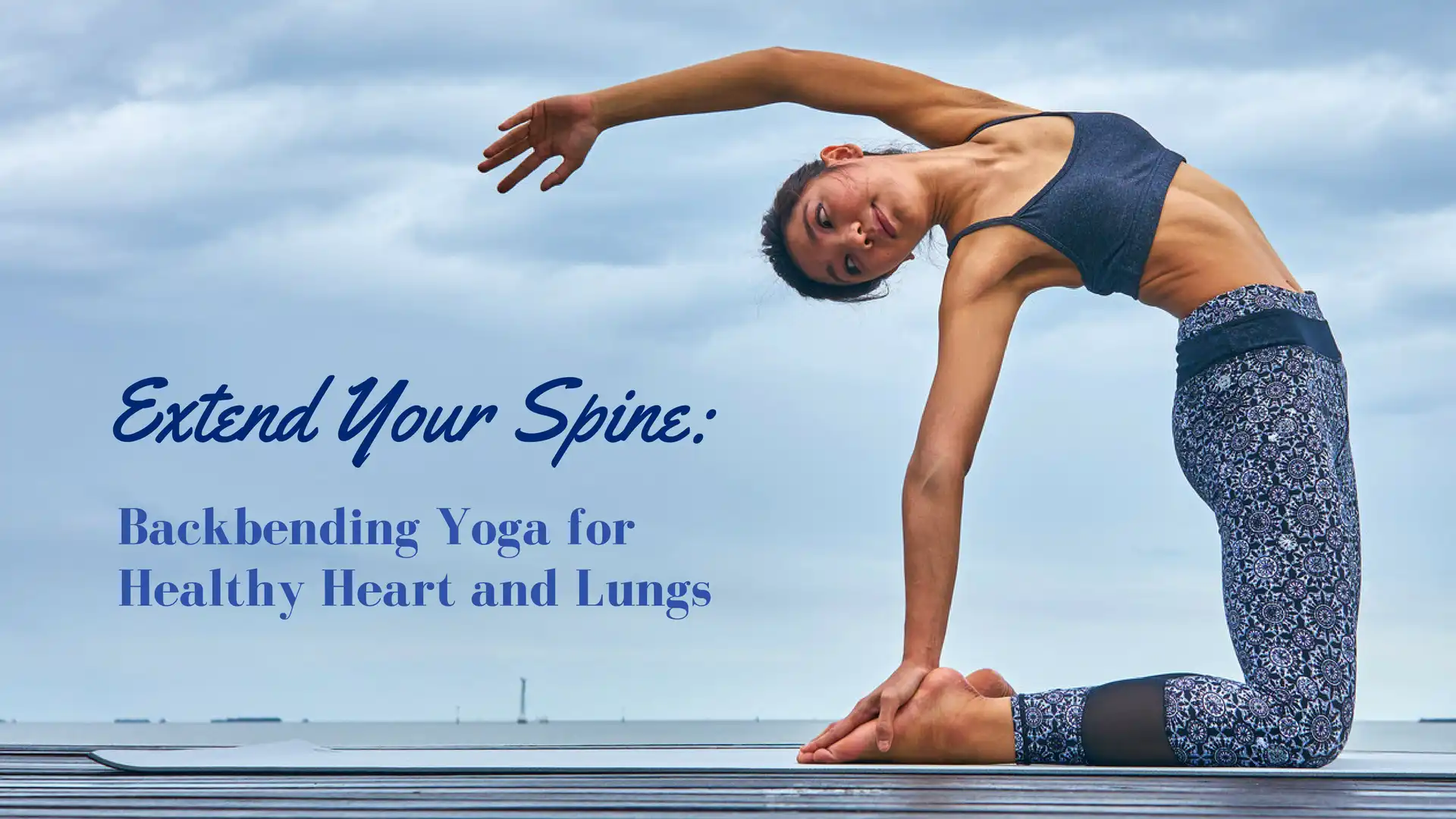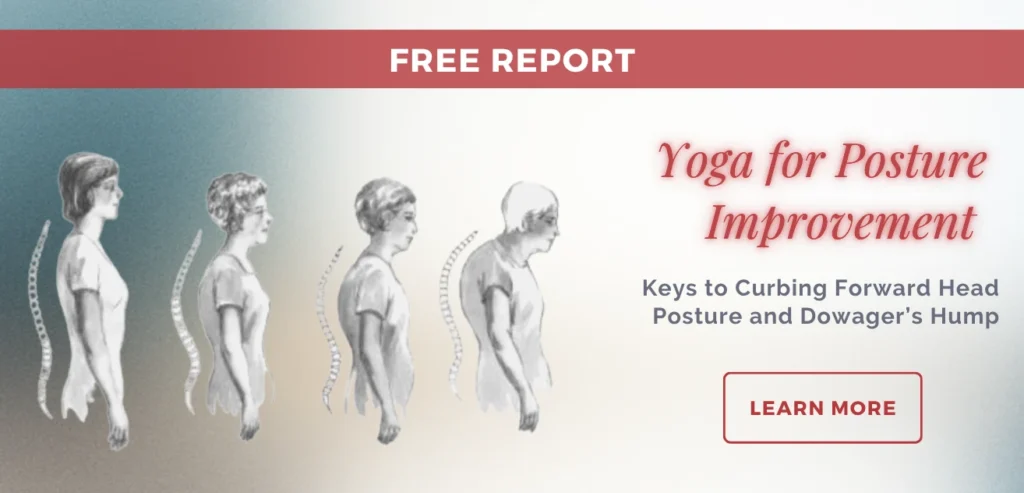Extend Your Spine! How Backbending Supports Respiratory and Cardiovascular Health

Most people are aware that the regular practice of yoga can have a positive effect on our physical health. By stretching and strengthening muscles, we improve the functioning of our musculoskeletal system. This is fairly intuitive and easy for people to understand.
However one of the most important, but often-overlooked, benefits of the physical practice of yoga is that it can also have a positive effect on cardiovascular and respiratory health. The cardiovascular system deals with the heart and blood vessels that bring oxygen to your body, and dispose of waste (carbon dioxide). These gases are pumped into and out of the body via the lungs, which are part of the respiratory system. Yoga also helps to stretch elements of these systems, providing vital health benefits.
How Yoga Strengthens and Stretches the Diaphragm
Breathing is the most important thing we do every day. One of the primary muscles responsible for breathing is the diaphragm, a large, dome-shaped muscle that separates the thorax from the abdomen (Image 1). When the diaphragm contracts, the center of the dome draws down towards the abdomen and creates a vacuum in the lungs that allows air to rush in for the inhalation. When the diaphragm relaxes, the air is pushed out of the lungs for the exhalation. This muscle is critical for breathing.
The diaphragm is made from skeletal muscle, just like most of the major muscles in your body. When you bring the spine into extension, as in a backbend, you stretch the diaphragm. It can be difficult to contract the diaphragm for an inhalation in this position, especially if a practitioner is not used to practicing backbends. It’s not unusual for newer students of yoga to have difficulty breathing in a backbend. Over time and with steady practice, the diaphragm will get stronger and it will become easier to breathe.
When you inhale while coming into a backbend, you contract and stretch the diaphragm simultaneously. Contracting against resistance is an effective way to strengthen a muscle. Thus, a backbend can help to both strengthen and stretch the diaphragm, improving its functioning and supporting your respiratory system.

Image 1: This is a view of the diaphragm looking up from below. The diaphragm is one of the primary respiratory muscles. (image credit below)
How Yoga Increases Arterial Elasticity
Stretching during yoga has an impact on the arteries of the body. Arteries are responsible for delivering oxygenated blood from the heart to tissues. Keeping arteries healthy is critical for maintaining health. Arterial stiffness is linked to high blood pressure, organ failure, diabetes, renal failure and other health problems. A study published in 2009 showed that individuals with greater trunk flexibility had less arterial stiffness.
As we age, the elastin in the walls of our arteries deteriorates and it is not replaced, leading to stiffening. However, the elastic properties of arteries are dependent on two factors: elastin and smooth muscle. Once elastin degrades, the body does not repair it. But the body is capable of repairing smooth muscle, which is where stretching and yoga can help. Preserving arterial elasticity should be a priority for those wishing to maintain good health in an aging body.
The 2009 study looked at a forward fold, but there is no reason to suspect that stretching in another direction would be any different. In fact, the major artery of your body, the aorta, lies just in front of the vertebral column. Every time you bring your back into extension, the aorta, and the heart itself, are under gentle tension that can keep the smooth muscle and cardiac muscle supple and elastic.
The femoral artery is a large artery that supplies blood to the leg. As it passes from the pelvis into the thigh, it sits right on top of the psoas muscle, a deep hip flexor that originates on the front of the lumbar spine. The psoas is stretched during backbends, along with the femoral artery lying on top of it. These relationships of muscles and arteries are common throughout the body. In many cases, when you stretch a muscle, you also stretch an artery.
Backbends: Yoga for a Healthy Diaphragm
The benefits mentioned above, a stronger diaphragm and less arterial stiffness, can be attained through the regular practice of yoga. Spinal extension (backbending) stretches the diaphragm. Breathing while in spinal extension can strengthen the diaphragm. And stretching, in general, can help to prevent arterial stiffness. The great thing about all of this is that you don’t need to add different poses into a yoga routine in order to obtain these benefits, the backbends and forward folds that are part of a regular practice will help promote cardiovascular and respiratory health in addition to helping to build musculoskeletal strength and increased flexibility. (Bridge Pose pictured above)
Reprinted with permission from Sara Doyle: Yoga and Anatomy.
Photo courtesy of Sara Doyle
 Sara Doyle (Ph.D., E-RYT 500) has a Ph.D. in Anatomy and has taught anatomy to medical students, residents, and undergraduates at Duke University since 2003. She has a thorough understanding of the human body and the anatomy of movement. Sara has spent thousands of hours in the anatomy lab and participated in the dissection of hundreds of cadavers, giving her a unique perspective on how the body works and the anatomical variation between individuals. Her yoga classes and workshops reflect a science-based perspective and include the most current research available.
Sara Doyle (Ph.D., E-RYT 500) has a Ph.D. in Anatomy and has taught anatomy to medical students, residents, and undergraduates at Duke University since 2003. She has a thorough understanding of the human body and the anatomy of movement. Sara has spent thousands of hours in the anatomy lab and participated in the dissection of hundreds of cadavers, giving her a unique perspective on how the body works and the anatomical variation between individuals. Her yoga classes and workshops reflect a science-based perspective and include the most current research available.
Sara has completed two 200 hour trainings – the first with Sarah Trelease, and the second more recently with Srivatsa Ramaswami, a direct student of Krishnamacharya. She has also completed a 300-hour training. Currently, Sara is enrolled in the MBSR (mindfulness-based stress reduction) teaching program at the UMass Center for Mindfulness.
Articles referenced:
Thorin-Trescases N, Thorin E. 2016. Lifelong cyclic mechanical strain promotes large elastic artery stiffening: increased pulse pressure and old age-related organ failure. Canadian Journal of Cardiology 32:624-633.
Yamamoto K, Kawano H, Gando Y, Iemitsu M, Murakami H, Sanada K, Tanimoto M, Ohmori Y, Higuchi M, Tabata I and Miyachi M. 2009. Poor trunk flexibility is associated with arterial stiffening. Am J Physiol Heart Circ Physiol 297: H1314-H1318.
Image-By Henry Vandyke Carter-Henry Gray (1918) Anatomy of the Human Body Bartleby.com: Gray’s Anatomy, Plate 391, Public Domain, https://commons.wikimedia.org/w/index.php?curid=607814



